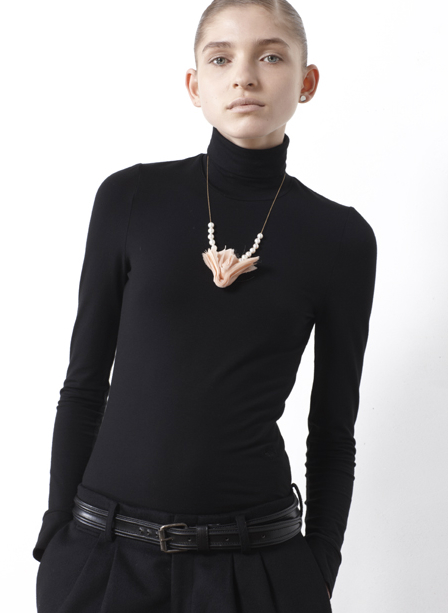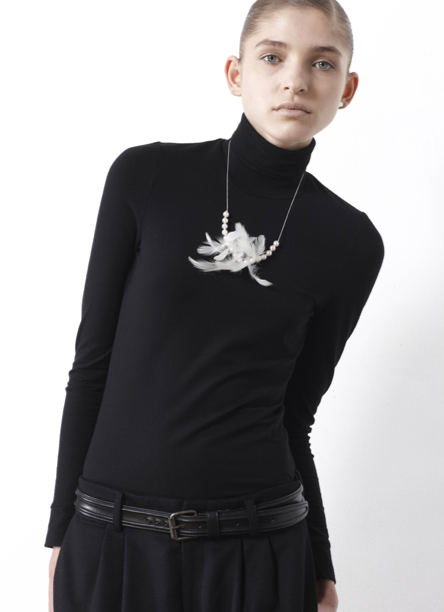TARO HORIUCHI
PEOPLEText: Monika Mogi, Brian Weiland
28-year old Taro Horiuchi has emerged onto the Japanese fashion industry as one of its bright talents, representing youth and modernity. Within his short career, he has already worked with Diesel and has now successfully completed his second collection. The A/W 2010 collection entitled ‘Void’ showcases his ability to combine minimalism with detailed embroidery. His pieces present something more than what is initially met by the untrained eye. From afar it may look like neat black clothing hung from floating racks in a cold gray and white installation, but the pieces are so much more. When observed, his coats made use of subtle lines and little details like a star shape formed by the lapels of a jacket or a curvy outline of a horse head stitched into a skirt. His jewelry, mainly a simple triangle and an oval eye, complemented his black clothes and gave them a more contemporary and transient feel. Transience, the urgency of a trend, is not a bad thing at all. It sets his collection apart and will let buyers know that this is not timeless, this is happening now. We sat down with Horiuchi to discuss his clothing, jewelry, and thoughts…
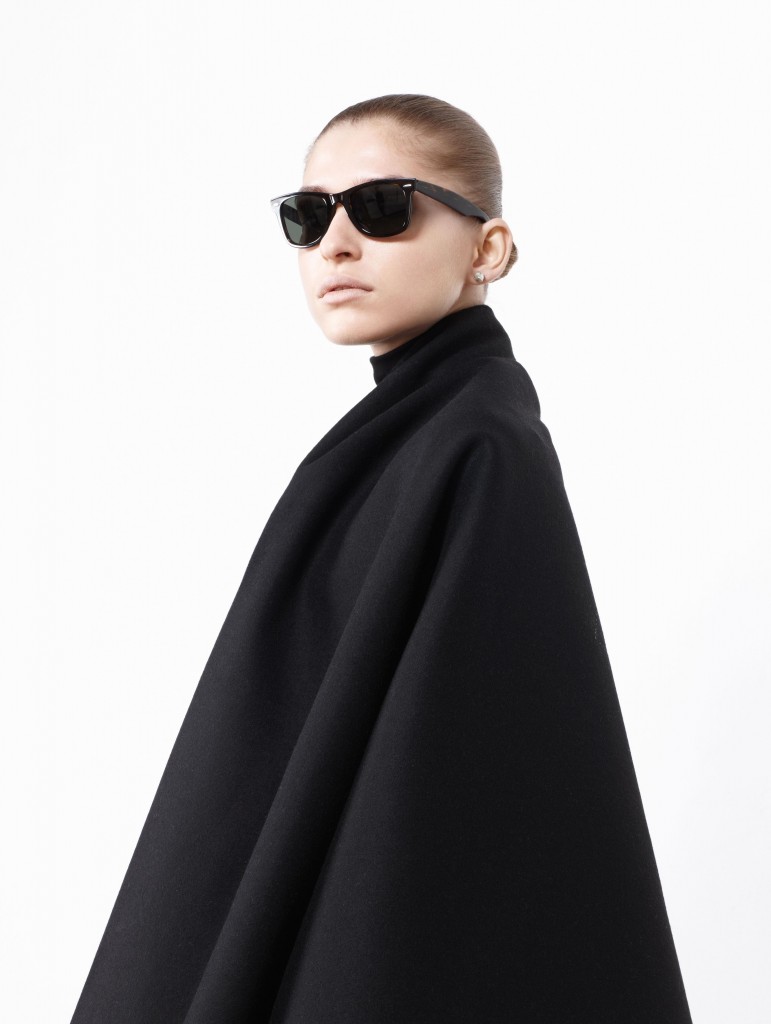
Taro Horiuchi A/W 2010 collection – “Void” © Taro Horiuchi
Your last theme was faith, nature, and time. You used very minimal designs and shades of gray. This time your theme is Void. How did you represent this idea?
It came from what I felt. I just came back from Europe, and I felt that Tokyo is always in chaos, there is so much is going on, but at the same time it is quite empty. Void somehow sounds like a negative word, but I wanted to represent it in a more beautiful way. It is more like a blackhole when I imagine the word ‘Void’, and a blackhole is nothing but contains everything at the same time. I have an idea that a black void wraps around everything and silent beauty exists inside of it. This was the first time I used black. Black has everything, it is very simple and minimal, but inside there are subtle details. I think fashion is a communication to the outside world and I wanted to make something that communicates to the self.
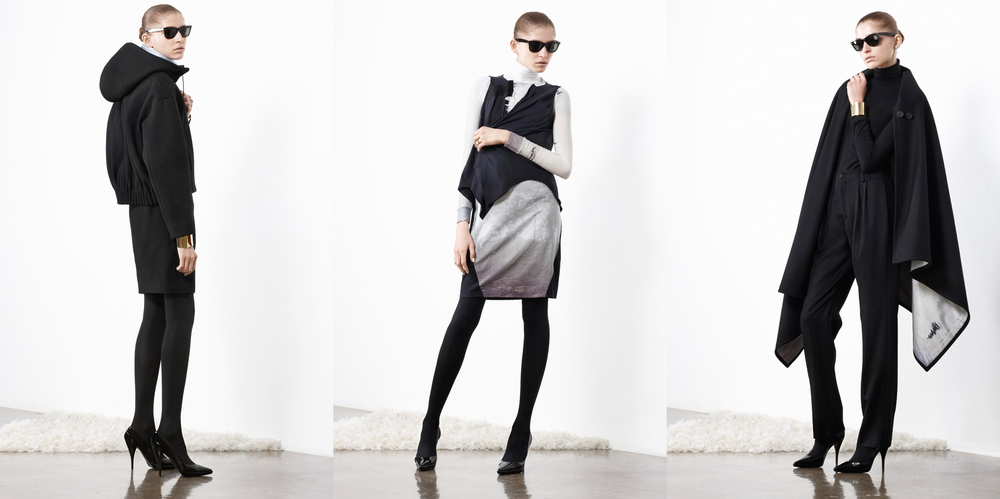
Taro Horiuchi A/W 2010 collection – “Void” © Taro Horiuchi
Do you see your work as art that is all about form? Or do you think that your clothes are functional as well?
Yeah, I think of them as functional, I think about how comfortable and light they are. Some of the materials we used this time are very light such as super organza.
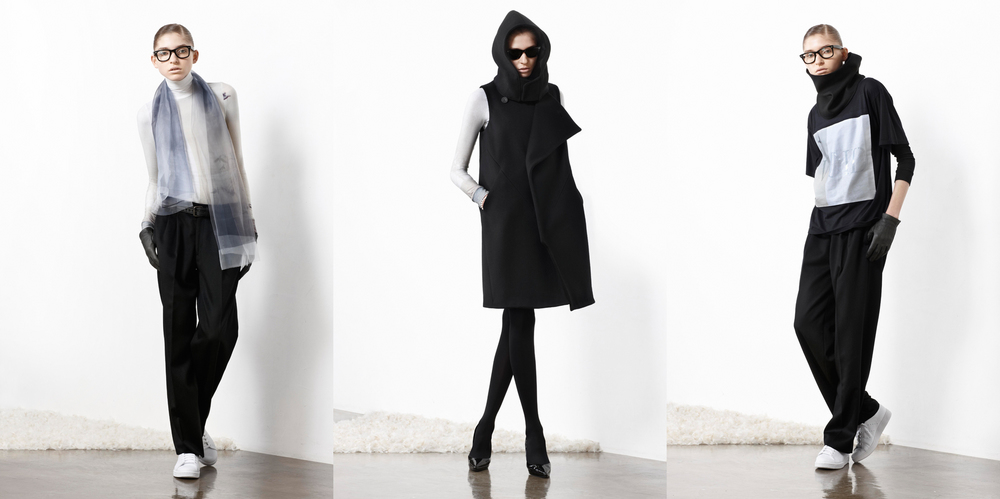
Taro Horiuchi A/W 2010 collection – “Void” © Taro Horiuchi
Your design colors are often simple and minimal. Why did you decide to use unsaturated colors? Do you have a favorite color?
I like bright colors like yellow and red, but I am just starting out so I wanted to do something simple with gray and black first.
Can you describe some of the special techniques you used for this collection?
I used printed lining on the inside, and I did some embroidery with geometric shapes by hand. We had a pretty technical mix of materials, but they are hard to explain. I used almost all original materials.
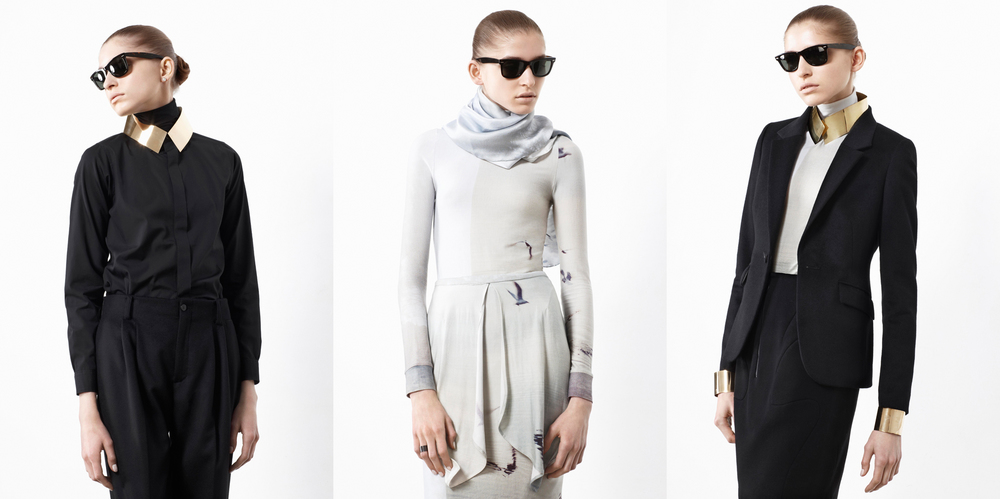
Taro Horiuchi A/W 2010 collection – “Void” © Taro Horiuchi
Your glass organza piece really stood out. Can you tell us a bit about your decision to use this technique?
Chanel had used it, but it hasn’t been used much. It is produced by a Japanese technique and the material is really stunning. I used some heavy materials in this collection, but I also wanted something really light that could move, and the glass organza scarves float very nicely.
What piece are you most proud of? What do you think will sell the most?
I like the sports parka. The materials that I used and the sewing techniques for this line are very expensive, so I am not sure what will sell best.
Taro Horiuchi A/W 2010 collection – “Void” © Taro Horiuchi
H&M, Forever 21, and Uniqlo are huge these days in Tokyo. What do you think cheap, mass produced clothes do to the industry?
Somehow, all the real creations will stay not just for fast fashion, but everything in between will be left out, I think.
What do you dislike about the Japanese fashion industry? What do you like about it?
Still a lot of the older people are making all the decisions in the industry. Times are changing, the American style of industry that we adopted years ago here is falling apart, so we are starting to develop our own, very defined Japanese fashion industry.
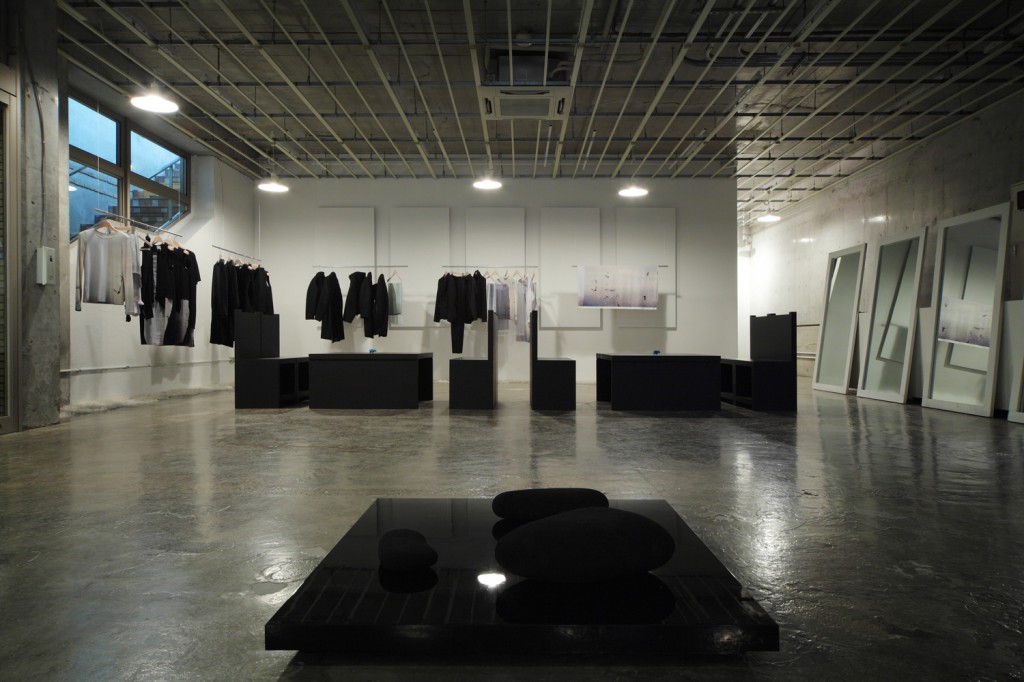
Taro Horiuchi A/W 2010 collection – “Void” © Taro Horiuchi
What about the American style system isn’t working?
Japan hasn’t always been a mass product-oriented nation.
So do you think that you, as a Japanese designer, represent what is happening in Japan’s fashion scene?
I think so. We haven’t had any real great designers for awhile so I hope that is changing.
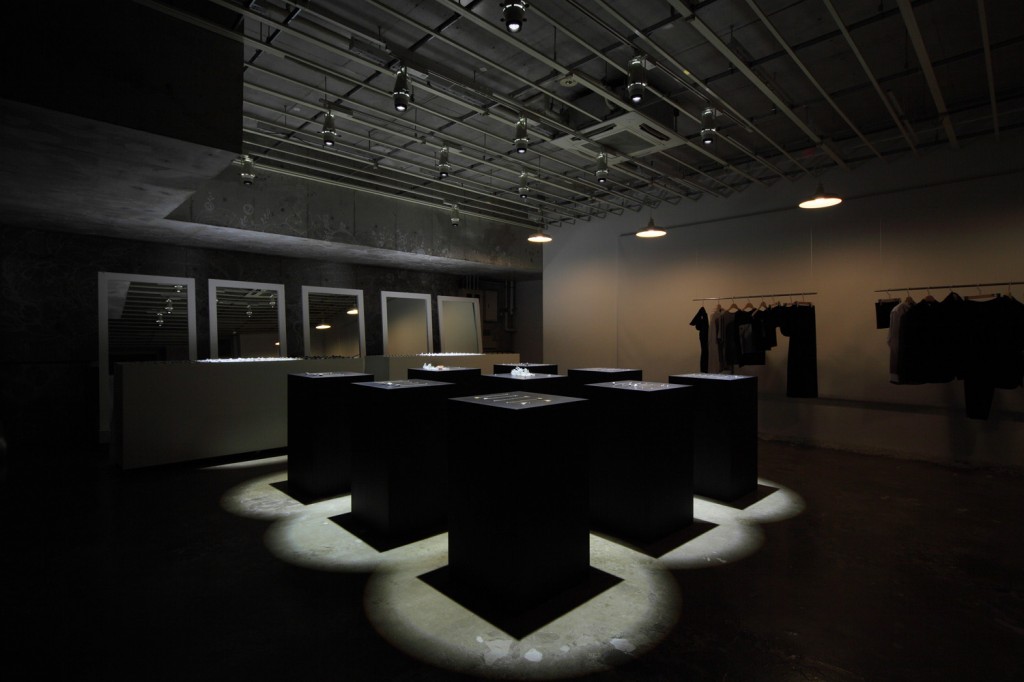
Taro Horiuchi A/W 2010 collection – “Void” © Taro Horiuchi
Can you tell us about the jewelry?
That is something I started last season based on the concept “Personal Luxury”. Most jewelry uses only rare stones such as rubies or diamonds and so the piece already has a value because of the gem. I wanted to find a different way to approach jewelry. When you are young no one can understand why you like something, but for you that thing is a personal luxury. I wanted to go back to that idea. So I picked up stones from a river. Each one is different because they have been shaped by running water for maybe thousands of years. It is funny to watch someone choose one of the rocks, I think it really shows your personality.
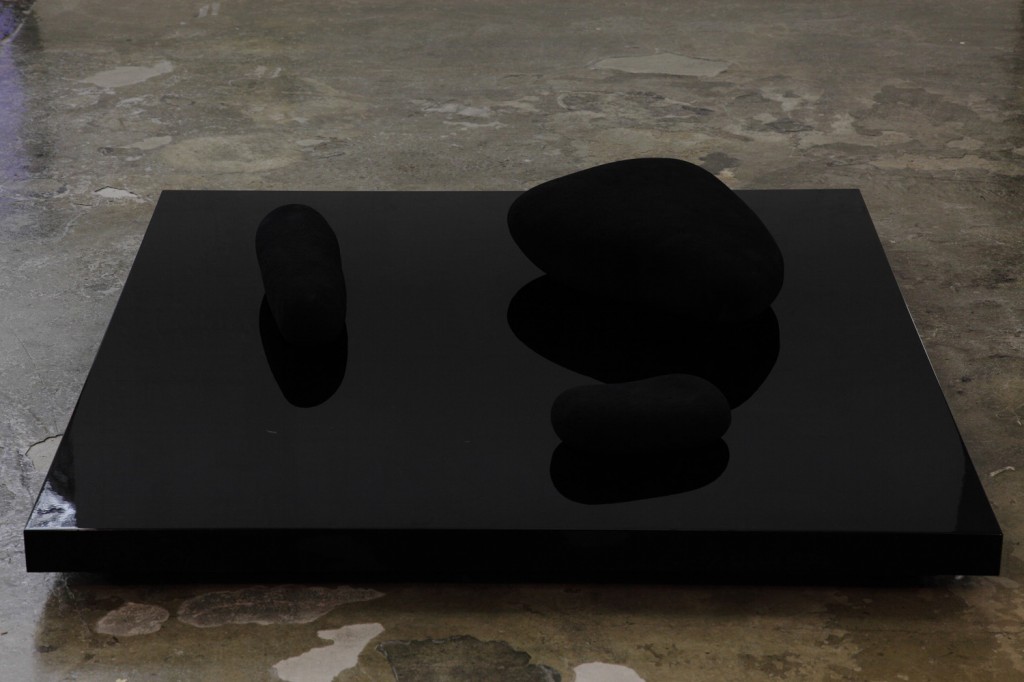
Taro Horiuchi A/W 2010 collection – “Void” © Taro Horiuchi
Are you drilling the stones for the necklaces?
No, it is a very special technique because the rocks crack easily. There are only a few people in Japan that can do it. I searched someone out, I found a guy that was teaching about stones at a university and he was making jewelry as a hobby. He found a way to do it.
Can you tell us about the misshapen pearls that you used?
It is the same idea, you know. Pearls are supposed to be very smooth and round and that determines the price of the pearl. But as they look through the pearls to find good ones there are many that didn’t form correctly. So I thought that these shapes were more interesting.
Taro Horiuchi has certainly achieved something great. We can see the greatness in the collection even though we don’t know fashion well enough. What we have found personally was that Horiuchi is not only a fashion designer, but also a visual artist. From the landscape photography printed on his glass organza pieces, to the hidden animals and geometric shapes in the lining, his work could be hanged on a wall rather than worn out on the street.
TARO HORIUCHI
Address: LUCERIA #OD, 2-13-21 Tomigaya, Shibuya-ku Tokyo
Tel: +81 (0)3 6804 8372
https://www.tarohoriuchi.com
Text: Monika Mogi, Brian Weiland


